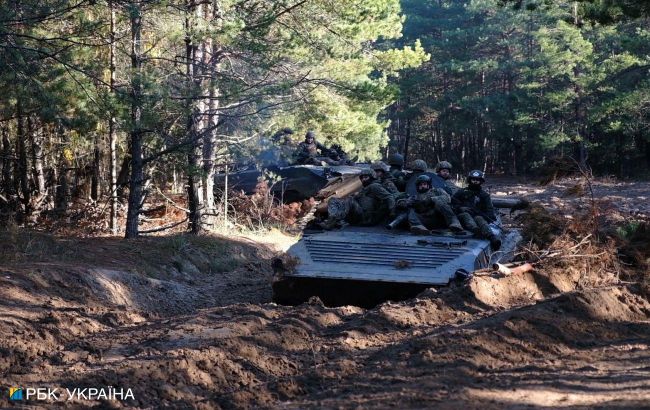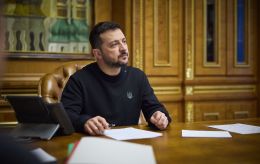Russian command knew: Seized documents show plans to prevent Ukraine’s Kursk operation
 Photo: FSB documents captured by the UAF explain failure of Russian defense in the Kursk region (Getty Images)
Photo: FSB documents captured by the UAF explain failure of Russian defense in the Kursk region (Getty Images)
Russian military command anticipated the operation of the Ukrainian Armed Forces (UAF) in the Kursk region and had been developing plans to prevent it for several months. Documents were seized from abandoned Russian positions in the region, according to The Guardian.
According to the article, the disclosure of this information makes the panic among Russian troops following Ukraine’s offensive in early August even more humiliating.
The documents provided to The Guardian also reveal Russia’s concern about the morale of its troops in the Kursk region.
Documents from Russian Ministry of Internal Affairs, FSB, and army
In late August, The Guardian met with a Ukrainian special forces group that seized and returned the documents to Ukraine. The group obtained documents from Russia’s Ministry of Internal Affairs, FSB, and army buildings in the Kursk region, later providing a selection for review and photographing.
Some documents are printed orders sent to various units, while others are handwritten logs recording events and problems at specific positions. The earliest entries are dated late 2023, while the most recent documents were recorded six weeks before Ukraine began its offensive in the Kursk region on August 6.
Most of the documents came from units of Russia’s 488th Guards Motor Rifle Regiment, particularly from the second company of its 17th Battalion.
A log entry dated January 4 mentioned Ukrainian armed groups' "potential breakthrough at the state border," and orders were issued to strengthen preparations to repel any attack. On February 19, unit commanders were warned about Ukrainian plans for a "rapid advance from the Sumy region into Russian territory up to 80 km deep to create a four-day ‘corridor’ before the arrival of main Ukrainian army units with armored vehicles."
In mid-March, units on the border were ordered to strengthen defensive lines and "organize additional training for leadership and strongpoints on proper defensive organization" in preparation for a Ukrainian border-crossing offensive.
In mid-June, a more specific warning appeared about Ukrainian plans "in the direction Yunakivka-Sudzha, with the goal of taking Sudzha under control," which indeed occurred in August. It was also predicted that Ukraine would attempt to destroy a bridge over the Seym River to disrupt Russian supply lines in the region, which later happened. The June document also complained that Russian units stationed at the front "are filled only 60-70% on average, and primarily made up of reserves with weak training."
When Ukraine's attack began on August 6, many Russian soldiers abandoned their positions, and within a week, Ukraine had fully taken control of Sudzha. "They ran away, without even evacuating or destroying their documents," said a member of the special operations group that seized the files.
Moscow’s chaotic retreat
During Moscow’s chaotic retreat, Ukrainian forces captured hundreds of Russian soldiers, many of whom were conscripts, not typically expected to engage in combat. The parents of one of the conscripts from the second company mentioned in the documents recorded a tearful video in August, identifying him as their 22-year-old son, Vadim Kopylov, stating he was captured near Sudzha, and urging Russian authorities to exchange him.
The documents provide insight into Russian tactics over the past year, including one instance where they discussed the need to create fake trenches and positions to confuse Ukrainian reconnaissance drones. "Models of tanks, armored vehicles, and artillery launchers should be created as well as mannequins of soldiers, and they should be periodically moved around," one of the orders said.
Unit commanders were also instructed to ensure that soldiers were exposed daily to Russian state media to maintain their "psychological condition."
UAF's operation in the Kursk region
As a reminder, the UAF launched an operation in the Kursk region on August 6. According to the Commander-in-Chief of the UAF, Oleksandr Syrskyi, as of August 27, 1,300 square kilometers and 100 settlements had been brought under Ukrainian control. Additionally, around 600 Russian soldiers were captured. In September, Russian forces launched a counteroffensive, which may end in their encirclement and defeat.
According to data from the Levada Center, the UAF’s operation in the Kursk region became the main event for Russian residents in August 2024, with 40% of respondents stating this.

